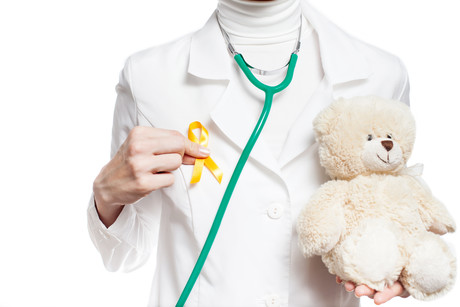Australia in top 8 countries for cancer survival

For an illness usually associated with bad news, we have a ray of sunshine for a change: Australia is in the top eight countries in the world for cancer survival.
Researchers of a major international study compared five-year survival rates across cancers and found that Australia is in the top two countries for breast cancer and rectal cancer survival, the top three for colon cancer and the top 11 for skin melanoma.
Cancer survival is generally increasing, even for some of the more deadly cancers such as liver and lung, according to the largest and most up-to-date study of population-based survival trends (2000–2014), covering countries that are home to more than two-thirds of the world’s population. But survival trends vary widely, and there are wide and persistent disparities between countries, particularly for some childhood cancers.
The CONCORD-3 study, published in The Lancet, analysed individual patient records from 322 cancer registries in 71 countries and territories to compare five-year survival from diagnosis for more than 37.5 million adults (aged 15–99 years) and children (0–14 years) with one of 18 common cancers. These cancers represent three-quarters of all cancers diagnosed worldwide every year between 2000 and 2014. For the 10 cancers already included in the CONCORD-2 study, the researchers were able to examine trends over the 20-year period 1995–2014.
Survival for most cancers remains highest in a handful of countries
After taking into account international differences in the age profile of cancer patients and the risk of death from other causes, survival for most cancers has been consistently high over the last 15 years in a handful of countries — the USA, Canada, Australia, New Zealand, Finland, Norway, Iceland, and Sweden.
For example, for women diagnosed with breast cancer in the USA and Australia between 2010 and 2014, five-year survival is 90%, compared to 66% for women diagnosed in India. Within Europe, five-year breast cancer survival increased to 85% or more in 16 countries including the UK, compared with a low of 71% in Eastern Europe (Russia).
In the UK, overall cancer survival is improving, with several cancers showing substantial increases in five-year survival between 2000 and 2014, including breast (80% to 86%), prostate (82% to 89%), rectum (55% to 63%) and colon (52% to 60%).
The deadliest cancers
While liver and lung cancers remain rapidly lethal in high- and low-income countries alike, the past two decades have seen some important progress in five-year survival in several nations. Liver cancer survival increased by more than 10% in Korea (11% to 27%), Sweden (5% to 17%), Portugal (8% to 19%), and Norway (6% to 19%). Similarly, lung cancer survival increased by 5–10% in 21 countries including the UK (7% to 13%) between 1995 and 2014, with most progress seen in China (8% to 20%), Japan (23% to 33%) and Korea (10% to 25%).
But not all major cancers have seen such improvements. Even in 2014, pancreatic cancer remained highly lethal in all countries, with five-year survival typically less than 15%.
Wide gulf in survival from childhood cancers
The analysis highlights that survival differences in childhood cancer are particularly wide; for acute lymphoblastic leukaemia (ALL), survival rates range from less than 50% to more than 90% in Australia. Despite increases in most countries since the mid-1990s, the wide variation for survival rates indicates major deficiencies in the diagnosis and treatment of a disease that is generally considered as curable.
Childhood cancer is costly, not only physically and emotionally for patients and their families, but also financially. In Australia, a new report released by CanTeen and Deloitte Access Economics reveals the true economic impact that comes from young Australians being diagnosed with cancer. The Economic Cost of Cancer in Adolescents and Young Adults report reveals that young Australians diagnosed with cancer will incur $1.3 million each in costs related to the illness. This includes more than $134,000 in health system costs, $418,000 in lost productivity and $644,000 in burden of disease costs. Each year, approximately 1100 young Australians (aged 15–25 years) are diagnosed with cancer.
CanTeen has developed the Australian Youth Cancer Framework to tackle the recommendations from the Deloitte Access Economics report and help young Australians overcome the unexpected and life-altering challenge of facing cancer during such a transformative stage of life. The new framework includes the Getting Cancer Young YouTube channel, aimed at providing support to patients and families across Australia by connecting them online.
$1bn vaccine and antivenom manufacturing facility opens
A $1 billion cell-based influenza vaccine and antivenom manufacturing facility has opened in...
National concussion clinical guidelines now available
The first Australia- and New Zealand-specific guidelines for all forms of concussion — from...
Doctors criticise "risky prescribing agenda"
The AMA and RACGP have expressed disappointment in the Pharmacy Board of Australia's...




![[New Zealand] Transform from Security Awareness to a Security Culture: A Vital Shift for SMB Healthcare — Webinar](https://d1v1e13ebw3o15.cloudfront.net/data/89856/wfmedia_thumb/..jpg)
![[Australia] Transform from Security Awareness to a Security Culture: A Vital Shift for SMB Healthcare — Webinar](https://d1v1e13ebw3o15.cloudfront.net/data/89855/wfmedia_thumb/..jpg)




